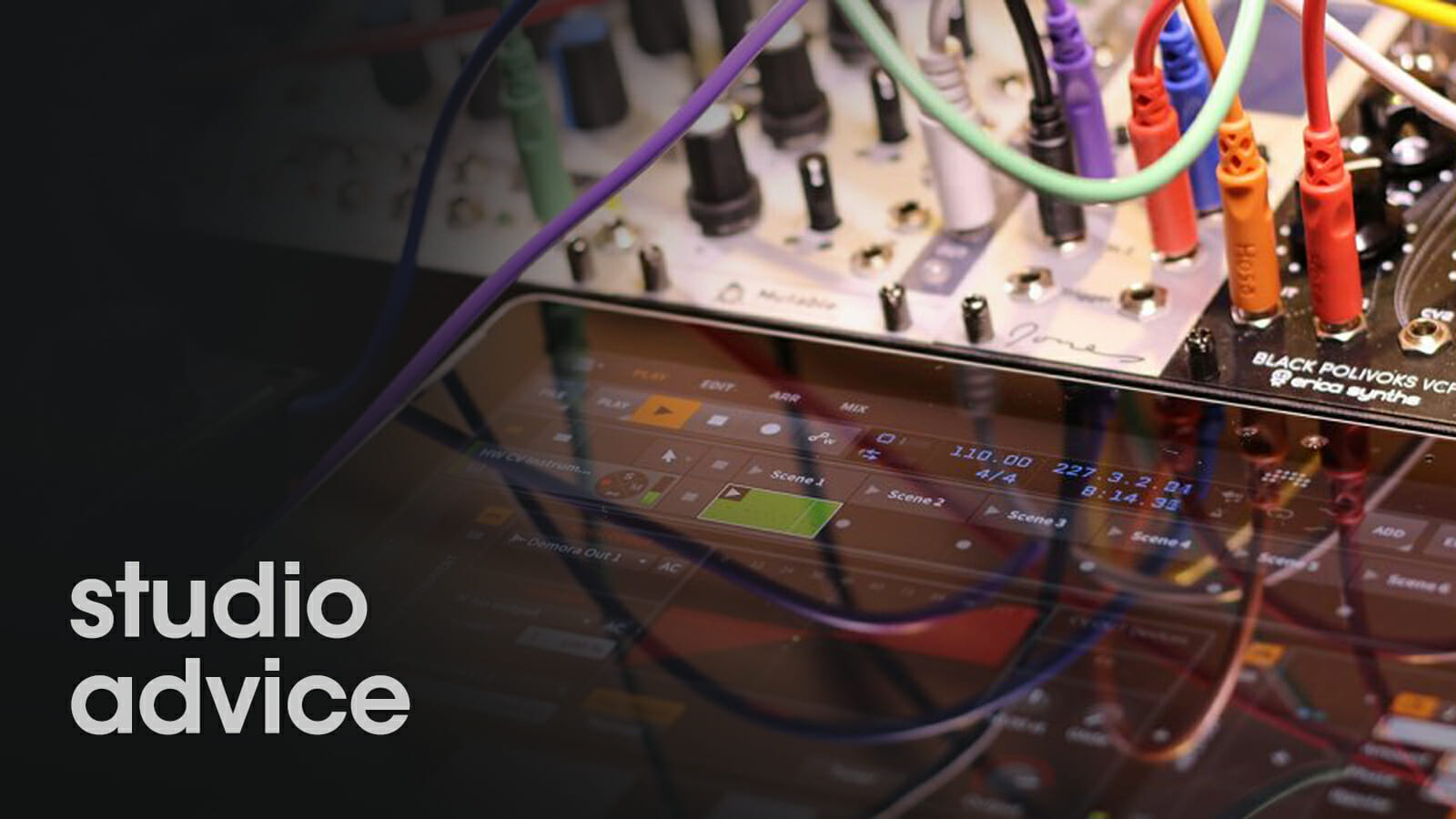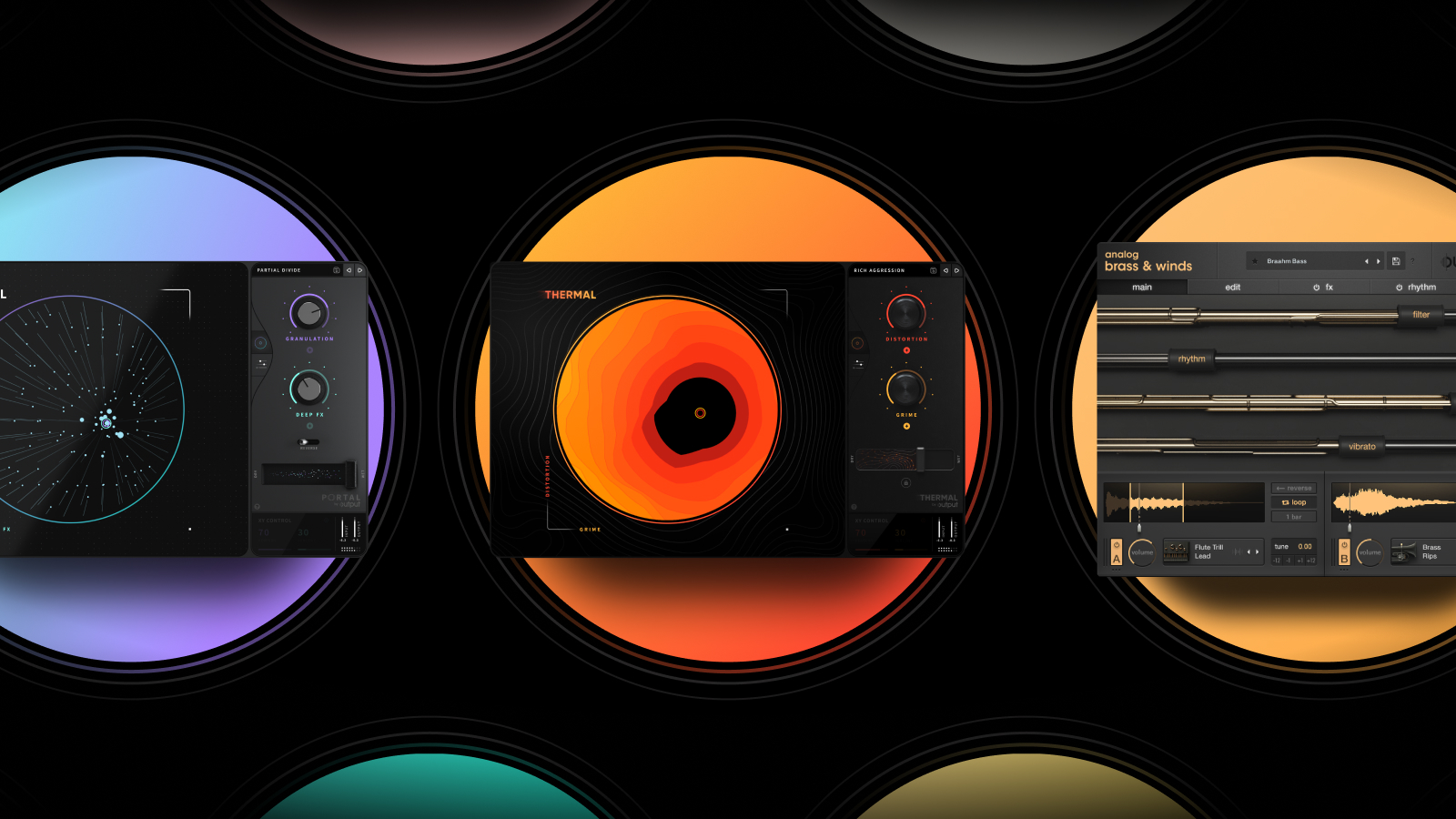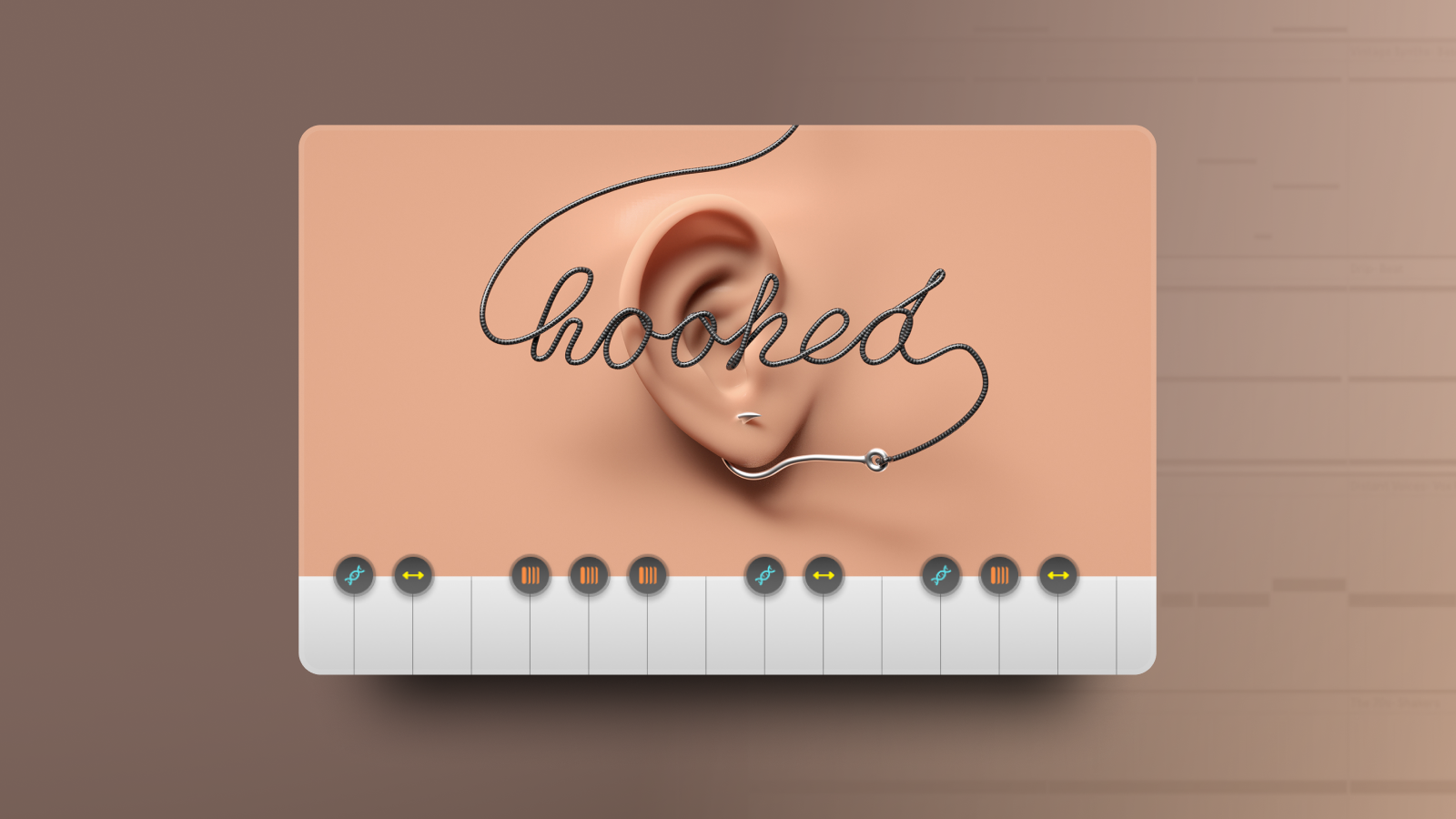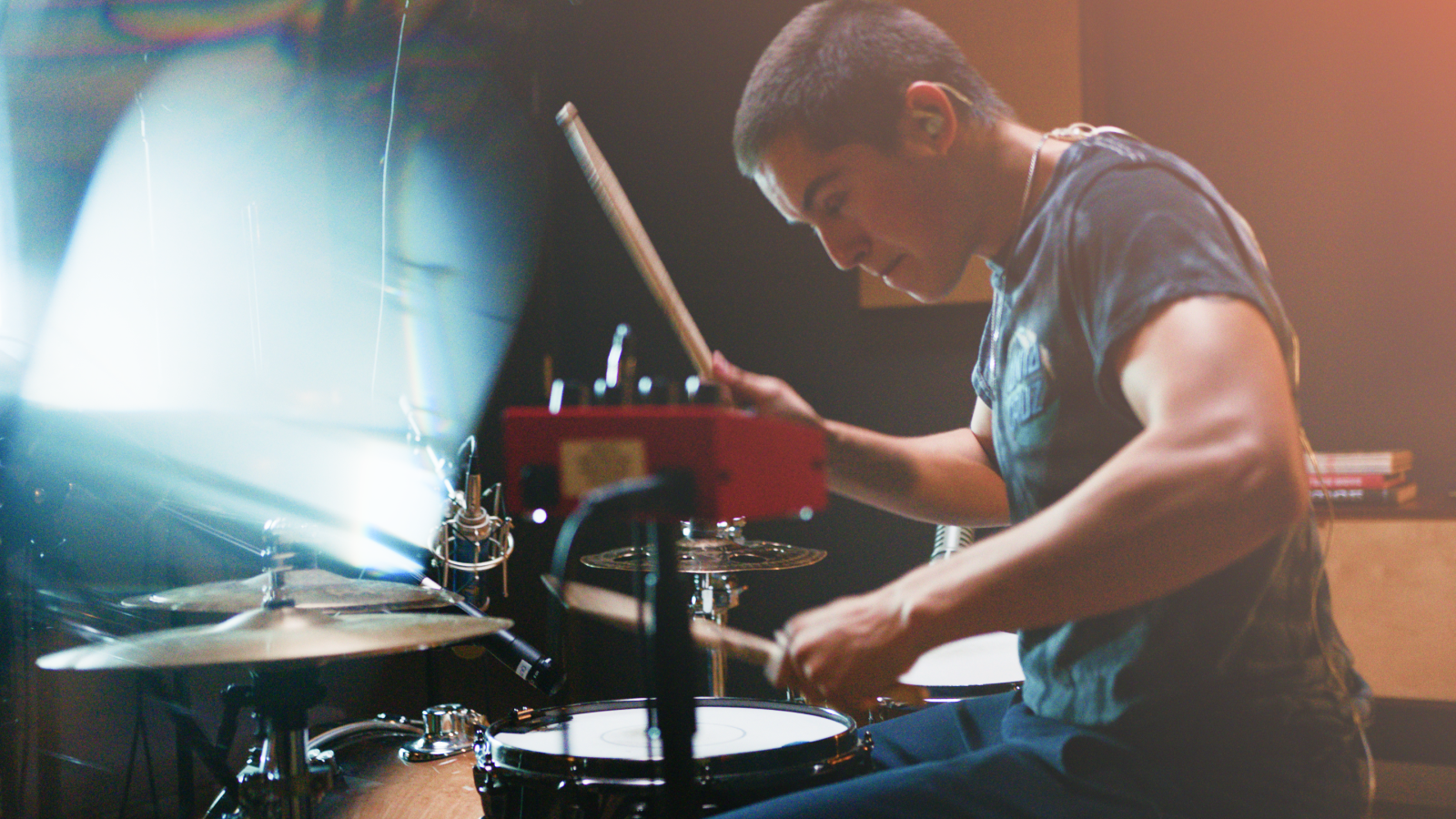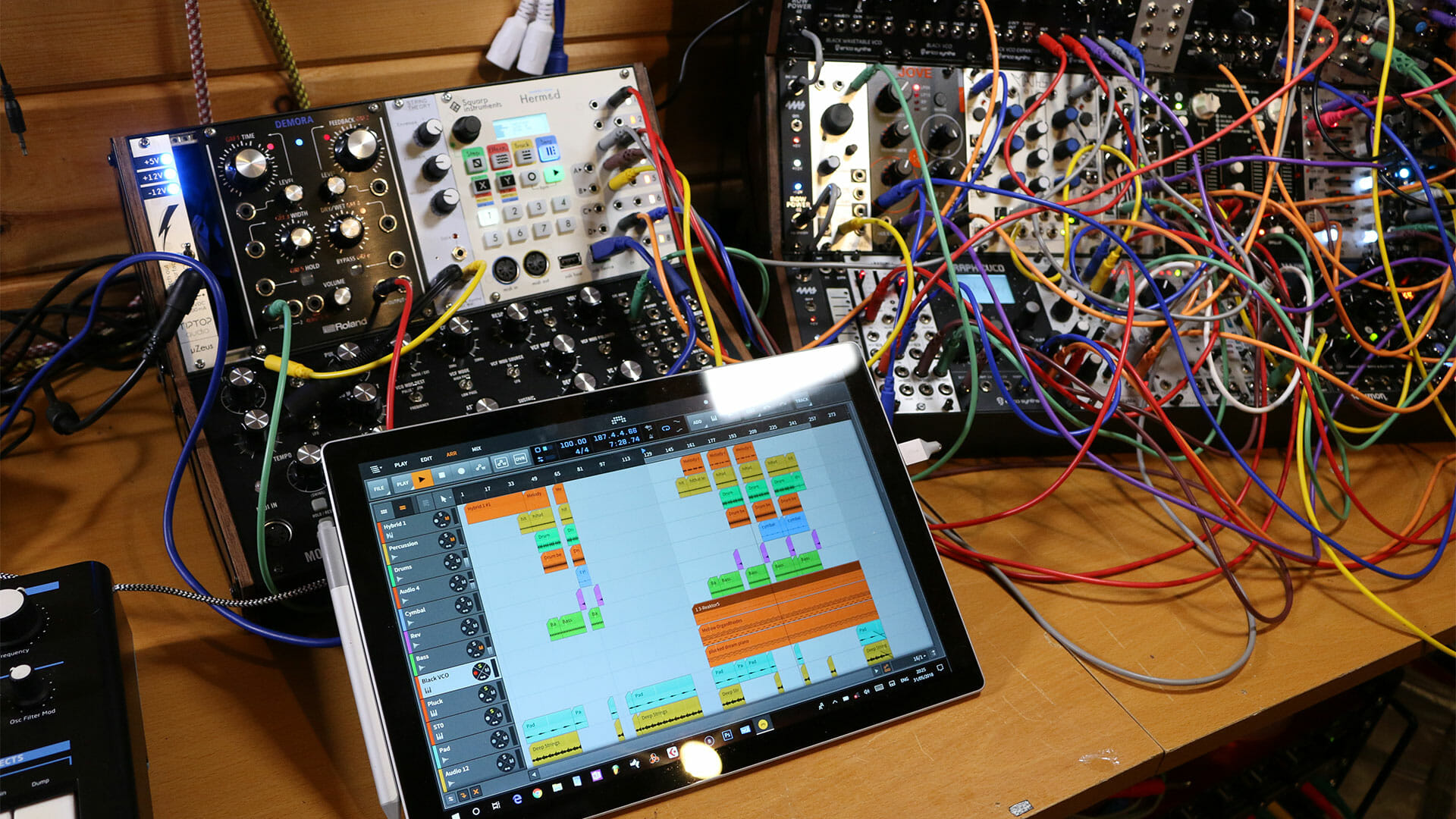
Combining your DAW with Eurorack doesn’t have to be overly complicated. Modular and Eurorack synthesis is increasingly popular, playing into the desire to spill back out of the box. There’s a sense that even though computers are astonishingly capable, we can enjoy a more natural connection to our music and our creativity when handling hardware instruments. For some, this has meant moving on from using a computer and a DAW entirely. However, for most of us, it means that our creative space is quickly becoming a hybrid of software and hardware.
This raises the question: “How do we connect these two worlds?”
It’s a particularly interesting question when talking about modular synthesis because the language of control and musical expression is spoken through CV (control voltage) rather than the more familiar and computer-friendly MIDI.
Here, we will walk through three ways to connect your DAW with Eurorack or modular synthesizer. Spill out of your own box with a minimum of fuss and bother.
Audio recording
Before we talk about communication, sequencing, and creative couplings, there’s a more basic use of the computer that’s enormously helpful to modular synthesizers. And that’s to use it as a good old-fashioned audio recorder. Yes, that’s right, even huge modular setups that do everything live need to send their sound somewhere so that it can be mixed down to some sort of format for delivery to your chosen medium.
The simplest version of this is to record the stereo output into your computer via a simple audio interface. You can use whatever recording software you like, but this is most likely going to be your DAW (digital audio workstation). At this stage, you don’t need to be concerned about synchronization, tempo, or locking anything to a timeline — your DAW is acting simply as a recorder.
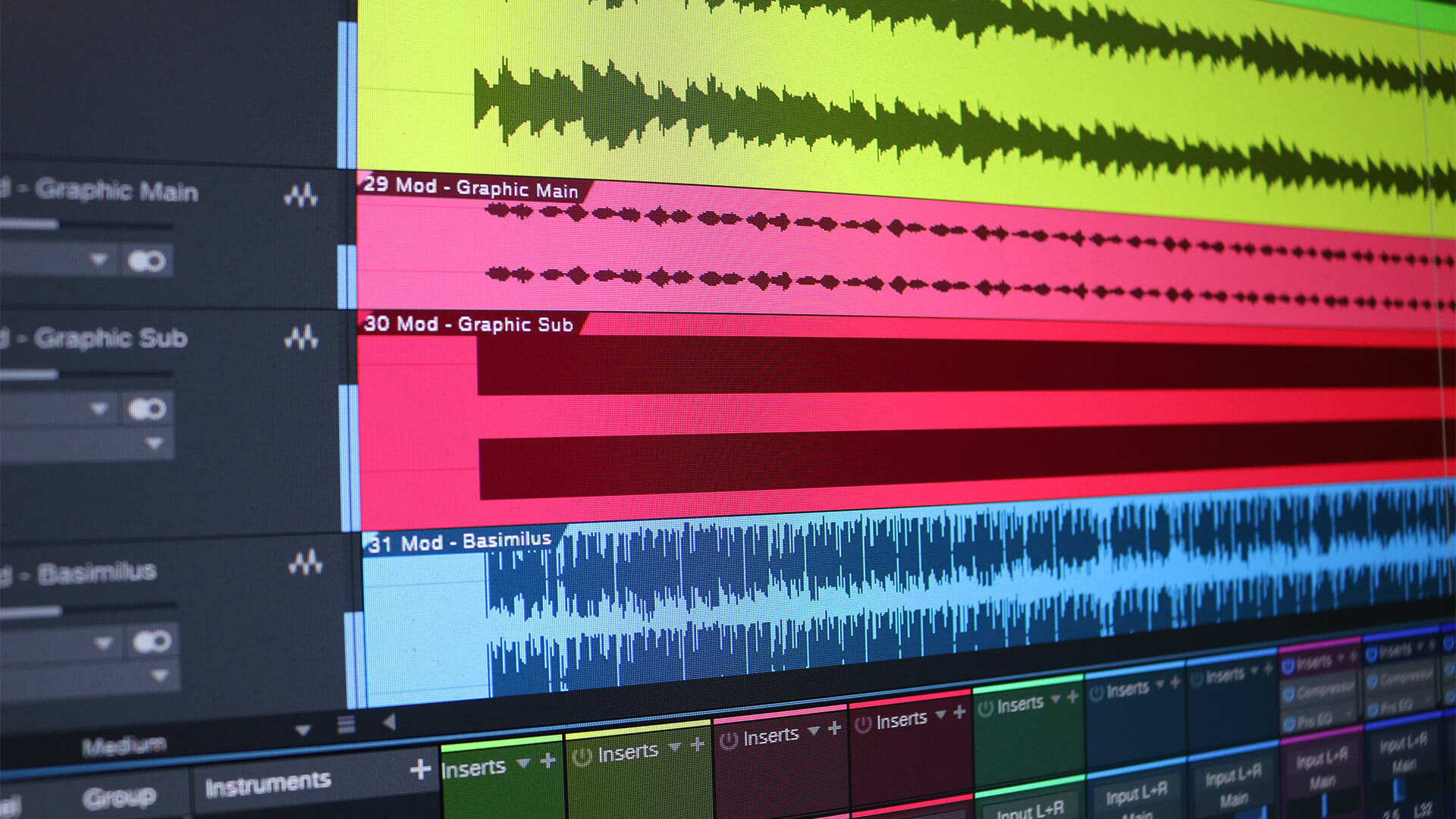
If you want to keep your options a bit more fluid, then you can route multiple channels out of your modular and into a multi-channel audio interface and record them into your DAW onto separate tracks. You can direct different oscillators to different tracks, and drum sounds, noises, and percussion to other tracks. This gives you the opportunity to mix and balance the sounds better. You can also add some effects processing, fade tracks in and out, and make use of panning and dynamic processing.
Instead of recording a single performance out of your modular, you can layer sounds up by recording one thing at a time into your DAW. Then during playback, you can record something else alongside those sounds. This means you can build up a huge piece of music with a small modular setup. This does start to bring up issues of synchronization. If you are using different arpeggiated or sequenced hardware, how does that sync up to the tracks you’ve already recorded? Good question. You can “wing it” and call the resultant mess “character” and “quirkiness,” but perhaps it would be better to look at the next option.
MIDI to CV
Typically speaking, DAWs and computers prefer MIDI. It’s a language they understand and are designed to work with. Fortunately, there are Eurorack modules that can convert MIDI into the CV signals that modular hardware uses. This is useful for both synchronization and sequencing when connecting your DAW with Eurorack.
For sync, your DAW can send out a MIDI clock, which is commonly used to sync up MIDI hardware — like external sequencers and drum machines — to the tempo of your project. Using a MIDI-to-CV converter, this can be changed into a voltage pulse and used to clock your modular to run its sequencers, gates, triggers, and modulations in time with your project.
Once the two are locked together, recording and layering tracks become much more manageable. Blend software with hardware and add some pads from a large software synth, explore the sounds of orchestral strings, add sampled drums, or drop in some loops and hits in interesting places. There’s no reason why modular has to stand alone inside your DAW. You can process it, rework it, and add to it like any other track in any other project.
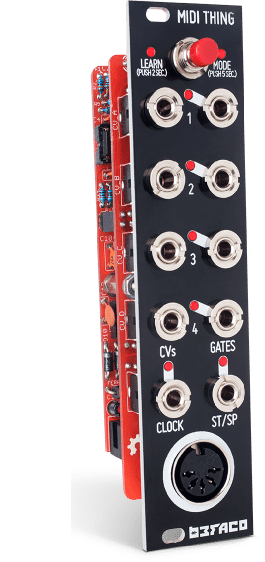
This brings us to sequencing. With your trusty MIDI-to-CV module patched in, you can start sending pitch (MIDI note) and gate (note on/off) information through your modular from MIDI tracks in your DAW. It opens up a whole other world of musical connection. You don’t have to be restricted to the steps of your hardware sequencers — compose entire symphonies on your computer, play your modular oscillators, and trigger their envelopes just like any other hardware synthesizer. Or, keep it simple with MIDI loops of a few notes. But now you have the capacity to copy/paste patterns and transpose with the click of a mouse, something that can be hard to do in Eurorack.
DC coupling
MIDI should be enough, right? It can be, but it can also be argued that MIDI doesn’t really capture the essence of analog control voltage. Sure, you can fire off notes, and on/off triggers, and even send out some modulation, but CV is very different in how it can be used. First of all, CV has an infinite resolution and can be continuously variable. MIDI only has 128 values to play with. That can result in filter sweeps feeling “stepped” or quantized. CV can be pushed and blended together to form shapes of modulated modulation that you simply can’t replicate with MIDI.
Since CV is like an audio signal running down an audio cable, can’t that audio just be recorded into the DAW or played back out to control the modular? Can’t your DAW just directly work with CV? With the right software, it can. However, it depends on the technical specifications of your audio interface.
Unlike an audio signal, CV is not always moving. Audio is a waveform and has a frequency that is usually in a range we can hear. CV can move and have a frequency but is often really low, like in a low-frequency oscillator (LFO) used for controlling the movement of something. Or, it can have a frequency of zero where it acts as a fixed voltage, like sounding the pitch of a note or setting a parameter to a certain level.
Most audio interfaces have filters built into the inputs and outputs to remove very low frequencies that we can’t hear so that they can’t affect or add noise to the signal we want to hear. This means that most audio interfaces will filter out the recording or playing back of CV.
However, there are a growing number of audio interfaces that are “DC coupled,” meaning they don’t have those filters and will let flat DC voltages through. With the right software you can use these audio interfaces to move CV in and out of your DAW, giving you proper modular style control over your Eurorack. Some DC-coupled audio interfaces include everything by Mark of the Unicorn, the PreSonus Studio Series range, the Universal Audio Apollo range, and the Native Instruments Komplete Audio 6 Mk2.
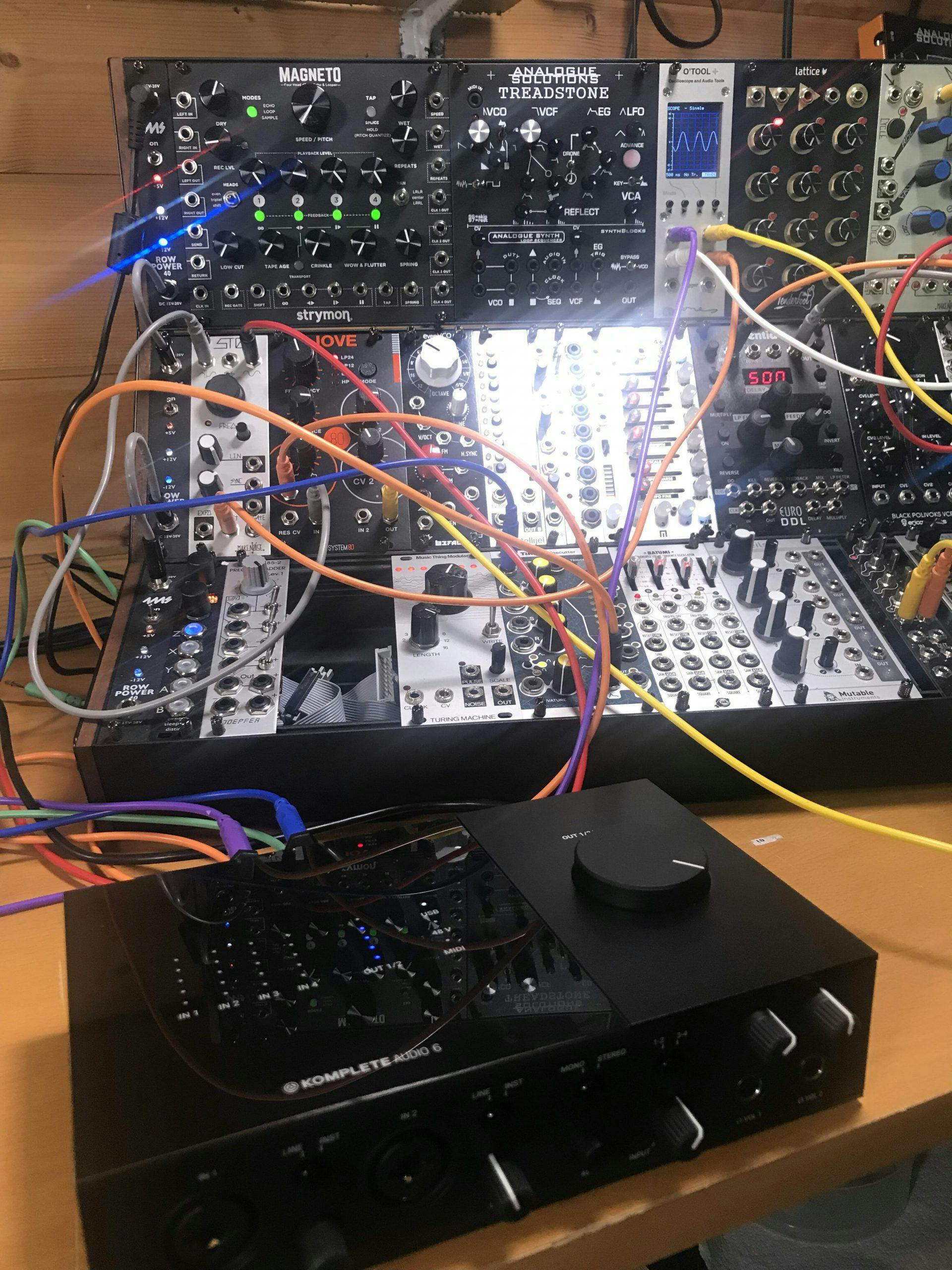
When it comes to software, Ableton Live and Bitwig Studio 3 come with tools that will generate CV to send to hardware and respond to incoming CV to control software elements. A set of plugins called Silent Way from Expert Sleepers can be used in any DAW to do the same thing. Other software such as Audulus or Reaktor from Native Instruments can send CV out of its own modular environment to integrate with hardware.
You can then sequence and modulate with potentially more complex and advanced tools than what you may have in your Eurorack alone. And, it doesn’t have to go all in one direction. You can pump interesting waveshapes, modulation, and probabilistically-generated sequences of gates back into your DAW to mess around with your software sounds and processing parameters. In some instances, this can remain as CV and interact with CV-compatible elements in your software, and in others, it can go through CV-to-MIDI conversion to become MIDI control over anything you like.
You can also use this to sync your DAW with Eurorack, which enables you to combine all the worlds in all directions and do your creating, recording, layering, processing, and modulating all within an integrated space of hardware and software. That’s pretty awesome.
The best of both worlds
There’s a common misconception that somehow Eurorack needs to stand on its own and that your electronic music-making should become “DAWless”. While there is artistic merit in making music away from the endless possibilities of the DAW, it can also be extraordinarily useful. How much you integrate your DAW with Eurorack is entirely up to you, but with a bit of thought and the right hardware, you can build a bridge between these two different worlds and make it as restrictive or as free-flowing as you need it to be.
